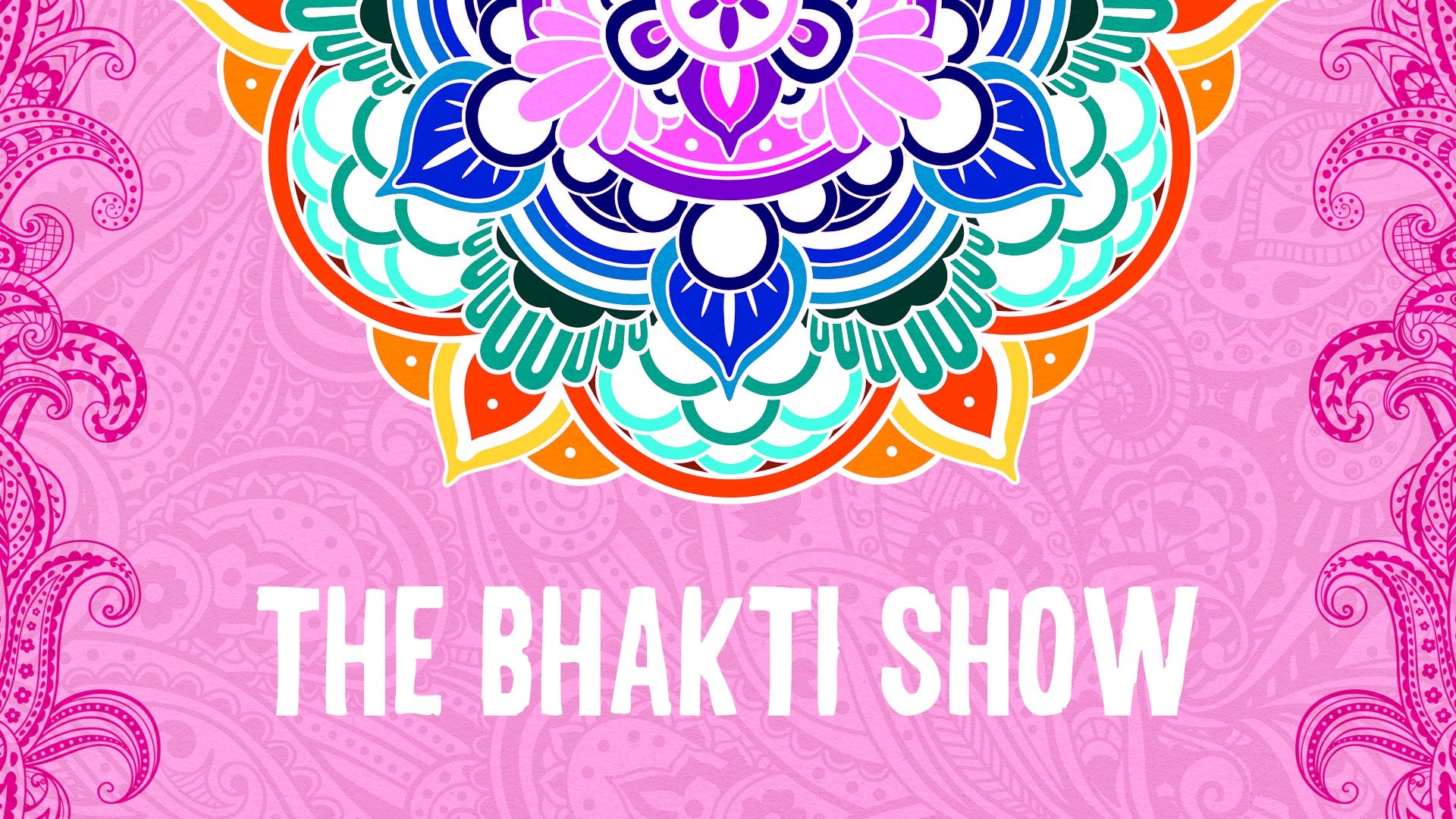Description
About This Video
Transcript
Read Full Transcript
Jai Ganesha. Namaste. Namaste. So happy to be here again with Manoj and Jyoti. So we've been exploring our relationship with the deities, the Hindu gods and goddesses, as tools for awakening on the yogic path. And in this section we're going to explore the symbology and the teachings that come to us through the form of Ganesha. Ganesha is one of the most commonly known deities, and you'll probably have seen him in the yoga studios and generally around the place.
So Manoj is really going to illuminate our understanding and how we can relate to this deity in a way that will support our awakening. And then Jyoti is going to share a song that really holds the energy of Ganesha and just allows us to feel this in a very visceral way. So I will pass it over to Manoj, who's going to introduce you. I love how you always talk about Ganesha's the main man. So over to you for the main man. Thank you.
Om Gam Ganapataye Namaha. I love the way Jyoti introduced Ganesha. She's been in America, I think, long enough from England to call Ganesha the main man of yoga. And I think I mentioned earlier that Ganesha is a lot of new beginnings and is perhaps the most beloved archetype the world over. And even when you take the root word Ganapati or Ganesha, Gana is like groups, categories. So as people we love being in categories.
And interestingly I was listening recently to a podcast where a coffee shop in New York decided to put two categories for their tips. One ten was dogs, another one was cats. And they found their tips like skyrocketed. Because people identify with categories, you know, where they belong to. And Ganesha is a lot of categories.
So we have categories of people who do yoga now. So many different categories. And interestingly when you go to India, it's all like usually one yoga. But this is America, right? So people love different categories. So Ganesha is a lot of categories. And I just figured out that's why people love him.
Now the main reason people are attracted to him, you know, traditionally elephants bring good luck. And interestingly Ganesha brings good luck and he removes obstacles in your life. So anything new you would do. A new wedding, a new birthday, a new event, a new business or a threshold in your life. Such as a new yoga teacher training, a new day which is a threshold, a new baby, a new job. You get Ganesha's blessings and you meditate with Ganesha so that it becomes smoother for you. Whatever path you are embarking on. Even the trip Jyoti and I have made to come here, we chanted Om Gam Ganapataye Namaha before we got on the car. Just to eliminate any traffic issues in LA which sometimes works.
So the question can be asked, how does Ganesha remove obstacles? And when you look at the symbology of Ganesha, every Ganesha is a mouse. For instance there is a little mouse here called the Moshika. Sometimes you find Ganesh statues which are huge mouse, a rat, more like a LA rat. But in this case it is a little mouse. And the mouse is his Vahana which means transport vehicle in Sanskrit.
So imagine this big pot-bellied elephant deity riding on this little mouse. And the first thing that happens is the poor mouse gets flattened. And the second thing that happens is Ganesha's belly kind of flops all over the floor. But symbolically the mouse represents your mind. Because your mind wanders like the way the mouse campers. Here and there.
So when Ganesha rides on the mouse, he calms the wavering mind. And in your life there have been instances where you are in a zone, things flow. You don't sense obstacles because everything is organically flowing. So where are the obstacles we sense coming from? The obstacles are coming from within us as vrittis or fluctuations of the mind.
So the real secret of Ganesha is he calms the mind so in a way you do the work yourself to remove obstacles. And Ganesha gives you an assist. And I always come back to this theme as yoga is a combination of effort and grace. We have to do the meditation, chanting, yoga to literally surrender. And Ganesha gives you the grace of giving your mind the ultimate calmness. And when your mind is calm, you don't sense obstacles. That's only step number one.
Step number two is the more interesting step where he has you do a u-turn and fold your mind inward. To realize the source of joy. And the Vedanta teachings tell you that the source of joy is yourself. It's your true nature. It comes from within you. And that's shown in the symbology of the sweet Ganesha is holding. This is the sweet of self-realization. It's the sweet of awakening, the sweet of enlightenment. It's called Sat Chit Ananda. Sat is truth of what is. Everything is existence. Chit is awareness. Ananda is bliss.
So when you are aware of your true nature as pure unconditioned consciousness, you are in bliss. And you accept things the way they are. It is like watching a beautiful sunset. You are in awe of the grandeur of nature. And you feel happy. And there's a couple reasons why it happens. One is you lose your individuality. You are in awe of the majestic nature. And the second thing is you accept things how they are. In other words, you don't wish the sunset were like 6 inches to the right.
Things are perfect in your life regardless of how things may seem. And that's also shown in this mudra called Abhaya Mudra. Where Ganesh does this with his right hand. This is the mudra of fearlessness. So a friend of mine, he wrote an article in the Huffington Post recently about Ganesha and this mudra, Abhaya, fearlessness. And if you google Huffington Post and Ganesha, you can read the article. And he put a picture of Ganesha which is similar to the one like this one. He actually got it from me when he got married at Bhakti Fest. That was roughly 6 years ago. And as I said, Ganesha is for like new beginnings. Now he put a picture of Ganesha and he put a picture of John Goodman. And if you ask me, they look pretty similar. But he actually specifically talked about this mudra.
The Abhaya, just like in the movie Big Lebowski where John Goodman, you know, this Vietnam War vet, he comes back, his life is like chaotic, crazy, but he enters a classic line in that movie where he says, regardless how chaotic things may seem, I am giving you a sanitized version. Not everything is bad inside. Everything is okay inside. Everything is chill. That's the real meaning of this mudra, okay? Regardless of how chaotic and in turmoil a life may seem, something within you is everlasting joy and you can access it anytime you want. With the right hand, Ganesha holds an axe. And what the axe does is it chops the pull of this world on your ego. In other words, the philosophy of Vedanta teaches us that your ego, it's like straddles a line between this world of duality, this world of different different objects and people.
And pure non-dual consciousness within you, the I am. In other words, when I look at you, I am seeing your body in time and space, but the real you is beyond time and space. And what's on the borderline is your ego. It's like a knot in between the two. And what happens is the ego is a very natural thing that develops around the age of two, the sense of individuality. But what happens is it gets sucked into the world more and more. It gets like enmeshed into the world through the five senses. Now when you visit Las Vegas, your ego is like a mile away from you. Too much sensory stimulation, right? So the axe of Ganesha, he chops the pull of this world on your ego. And on the other hand, on the left hand, he holds a nose.
A nose is like a lasso, a rope. He yanks your ego back and pulls it home. So awakening or enlightenment happens to the ego. You know, another acronym for ego is edging Ganesh out. And interestingly, the Sanskrit word for ego, and I am going to geek out a little bit in Sanskrit here. The Sanskrit word for ego is ahamkara, a-h-a-m, ahamkara, which means eye maker. And the Sanskrit word for the vastness of consciousness is maha, the great. So what happens when Ganesh chops the pull of the world and yanks it back, your ego back to home where you belong? The aham flips back into the maha. So interestingly enough, you flip back the letters a-h-a-m, aham, it flips back into maha. So the individual becomes the macrocosmic.
That's the highest teachings of Vedanta, that you are infinite. That's why he has an elephant head on a human body. That's the real meaning, the symbolism of the elephant head is the maha, vastness of consciousness. And the human body is us. So Ganesh's body is the great, what is called maha-vakya, the great saying from the Vedas, tatvam asi, tatvam asi, which means that you are. And that is the vastness of consciousness which pervades everything. And you is your true nature, not this body-mind, but a witness of the body-mind, the I am. And the highest teachings of the Vedas is tatvam asi, which means you are infinite.
So we are going to listen to a beautiful chant on Ganesha, sung by Jyoti, and she is a singer as well as a scholar. So the song is extremely powerful which elevates Ganesh to consciousness. And her singing, she is a classically trained musician with bhakti, so it is quite remarkable how the two come together. And she is going to sing slokas which is a combination of mantras about Ganesh. So I encourage you to close your eyes and please go into that deep meditation and rapture, rapture of the union with Lord Ganesha. Satsang with Mooji Satsang with Mooji Satsang with Mooji Satsang with Mooji Satsang with Mooji Satsang with Mooji Satsang with Mooji Satsang with Mooji Satsang with Mooji Satsang with Mooji Satsang with Mooji Satsang with Mooji Satsang with Mooji Satsang with Mooji Satsang with Mooji
The Bhakti Show
Comments
You need to be a subscriber to post a comment.
Please Log In or Create an Account to start your free trial.


















